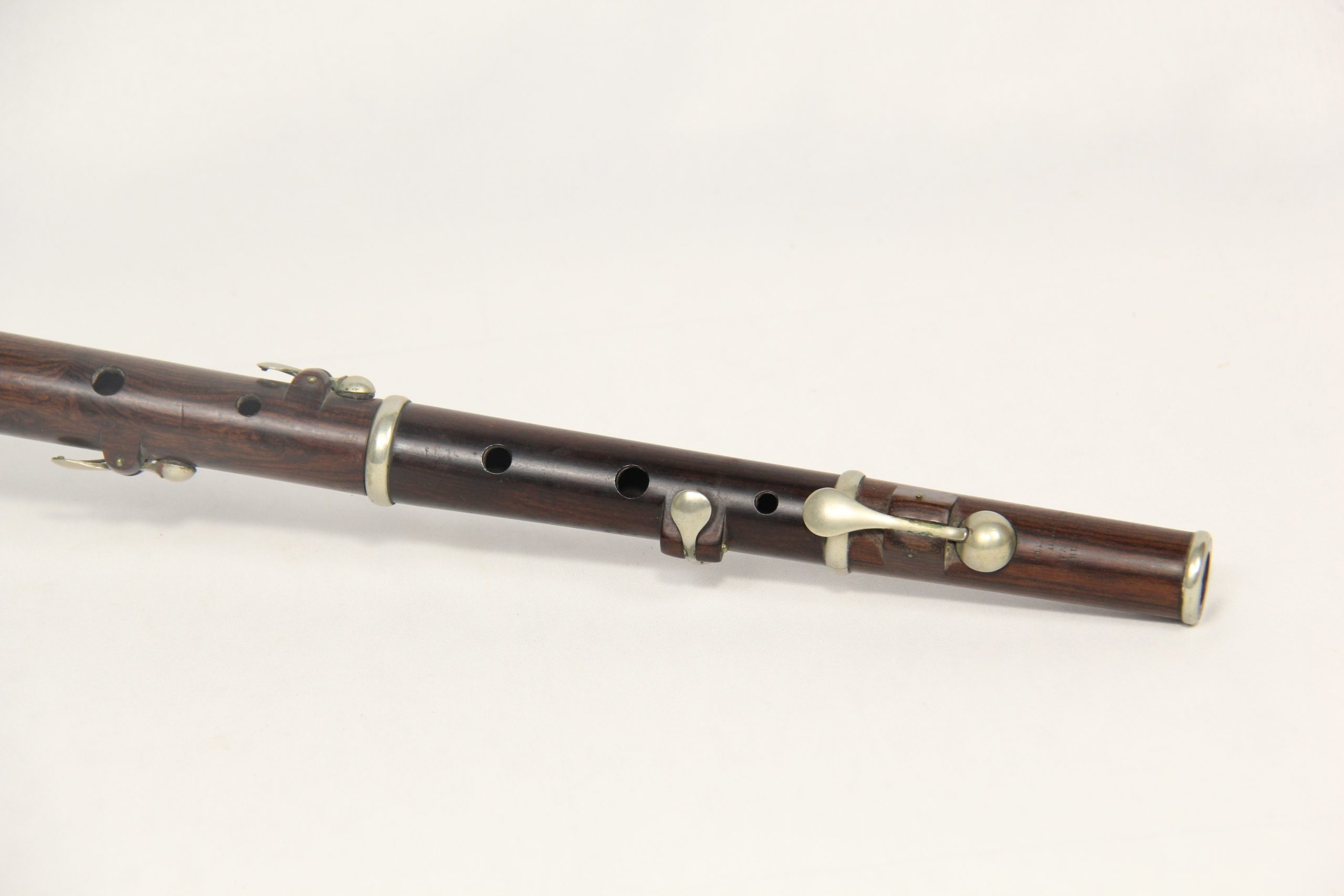4-Key Flute
Details
- Origin: New York, NY, USA
- Date Made: 1836-1881
- Maker: C. Peloubet
- Collection: E 29
Description
5 sections, primarily rosewood with German silver ferrules, metal-lined head joint and tuning slide. “C. PELOUBET I NEW-YORK” on head, barrel, upper and lower joints. “C. PELOUBET / NEW-YORK / FACTORY AT /BLOOMFIELD /N. J.” on foot joint.
Regarding the maker:
Louis Michel Francois Chabrier Peloubet, also known as “Chabrier Peloubet”, was the son of Louis Alexander Peloubet. Having learned instrument making from his father, Chabrier Peloubet became visible in New York’s musical industry in about 1829. For the first several years he built flutes and woodwind instruments, and he often won awards for the instruments he exhibited. In 1836 Chabrier Peloubet moved his workshop to Bloomfield, New Jersey. Peloubet began building melodeons in about 1842 and cabinet organs around 1848. In 1849, the firm was changed to “C. Peloubet & Son” when his son Jarvis Peloubet came into partnership. Peloubet’s factory burned in 1869 and a new, modernized “state of the art” factory was built immediately. (“Peloubet – Antique Piano Shop” 2018)
Not much information exists on four-key flutes, but the four-key flute was quite common by the 1820s, with the most common key configuration being a four-key flute with a D-foot and D#, F, G#, and Bb keys.
See here a demonstration video of a 4-key flute from Meltzer & Co., London 1837-42: https://www.youtube.com/watch?v=dZNvTM-FNdQ
Sources
- “Peloubet – Antique Piano Shop.” 2018. Antique Piano Shop. July 11, 2018. https://antiquepianoshop.com/online-museum/peloubet/.
- “The 19th Century Simple System Flute, I.” 2022. Oldflutes.com. 2022. http://www.oldflutes.com/19C-keys.htm#:~:text=A%20four%2Dkey%20flute%20with,one%20key%20to%20control%20it.







